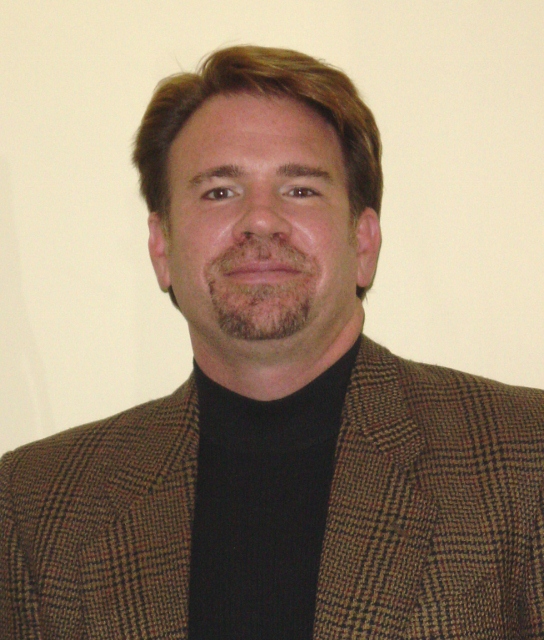There are several factors impacting ambulatory surgery center profitability — both in and out of their control.
Here are five of the most common pressing financial issues for ASCs today:
1. New physician buy-in. One of the biggest factors impacting an ASC's value is physician mix. The strongest ASCs are constantly recruiting new physicians to bring cases to their centers, and with a shrinking pool of independent physicians in most communities some centers are looking to fast-track physician buy-in.
 "Due to the maturity of the ASC industry, it is often hard to even find what we call 'orphan' surgeons — ones without an ASC investment," says Joan Dentler, MBA, president and CEO of Avanza Healthcare Strategies. "An ASC looking to grow its investor pool is going to need to offer something compelling to lure an investor from an existing investment, and the competition between ASCs to attract new surgeons coming into an area is fierce."
"Due to the maturity of the ASC industry, it is often hard to even find what we call 'orphan' surgeons — ones without an ASC investment," says Joan Dentler, MBA, president and CEO of Avanza Healthcare Strategies. "An ASC looking to grow its investor pool is going to need to offer something compelling to lure an investor from an existing investment, and the competition between ASCs to attract new surgeons coming into an area is fierce."
Bringing on younger surgeons ensures the ASC will continue, even after the initial investors retire. Buyers like to see a plan for the future, and adding the surgeon's cases can help improve the center's financial situation. However, current owners must ensure new investors have aligned goals and motivations for future growth.
"A key to a successful partnership is making sure everyone is on the same page about what they want out of the investment," says Ms. Dentler. "If a new investor is more interested in having their special supplies and equipment while the current owners are focused on expense reduction to improve return on investment, there are going to be problems."
2. Large capital purchases. It's important clinically for ASCs to have updated equipment, but outdated equipment can also impact the center's value. Because a buyer would need to replace outdated equipment, an ASC with updated systems is more desirable. ASCs may also look to add new specialties or higher acuity cases, and purchasing that equipment often comes at a significant price.
"We are seeing a lot of capital purchasing at our centers as cases that have been dedicated to the hospital environment move toward surgery centers," said Daren Smith, director of clinical services at Surgical Management Professionals, in a Becker's ASC Review article. "Some of those cases coming into ASCs require power equipment — like total joint replacement — or other tools for procedures like spine surgery."
Smith, director of clinical services at Surgical Management Professionals, in a Becker's ASC Review article. "Some of those cases coming into ASCs require power equipment — like total joint replacement — or other tools for procedures like spine surgery."
In addition to keeping the equipment up-to-date, surgery centers are now faced with purchasing practice management systems, operations software and electronic medical records. Mr. Smith recommends collecting quotes form several different vendors before making a purchase and doing the research to determine how the acquisition will impact the center's capital budget.
"On each of the items you plan to put into a capital budget, do research to create a return-on-investment report," says Mr. Smith. "Show your board how the investment in new equipment will yield new cases and how long it will take before the equipment will pay for itself."
He typically likes to see a return-on-investment in less than 24 months. The ASC should have a place in the budget for capital expenses, but sometimes investors need additional funds. Traditionally they sought financing from banks, but new access to capital from private equity or other healthcare-specific lenders could be beneficial in the future.
 3. Cash flow issues. ASC owners outline how distributions are calculated during the initial operating agreement, but sometimes those agreements allow for some discretionary working capital holdbacks, according to Arthur E. Case, CASC, Senior Vice President of Business Development at Outpatient Healthcare Strategies in a Becker's ASC Review article.
3. Cash flow issues. ASC owners outline how distributions are calculated during the initial operating agreement, but sometimes those agreements allow for some discretionary working capital holdbacks, according to Arthur E. Case, CASC, Senior Vice President of Business Development at Outpatient Healthcare Strategies in a Becker's ASC Review article.
"If distributions are causing cash flow issues, look at whether you are leaving enough money in the bank to cover short-term working capital or operating expenses," he says. "You don't want to end up in a situation where you are not paying a bill and end up getting hit with late fees or missing out on discount opportunity because you paid a distribution without considering upcoming expenses."
Even a $200 to $400 difference in distribution pay could make a huge impact on accounts payable. It may not always be in the best interest of the ASC to make large distributions if cash flow will take a hit.
4. Declining reimbursement. Insurance companies are squeezing payment wherever possible, and ASCs are seeing declining reimbursement on many standard cases. In-network contracts and narrowing networks leave some ASCs struggling; those that have depended on out-of-network contracts in the past may be re-thinking their strategy as some centers across the country are seeing these opportunities dry up.
One of the strategies to curb lower reimbursement is bringing in higher acuity cases that were previously considered inpatient cases. Joint replacements and spinal fusion, to name a few, are now performed in the outpatient setting due to newer surgical and pain management techniques. But, financial success with these cases isn't always guaranteed.
"ASCs would be wise to carefully conduct their due diligence into the new cases," says Jessica Nantz, president of Outpatient Healthcare Strategies. "Ask the physicians to project their volume and then assume the figure will be at least 30 percent lower. Speak with payers to determine whether they will cover the cost of the cases. Speak with your suppliers and group purchasing organizations to determine exactly what supplies will cost. Make sure there's a positive return-on-investment. If the numbers don't add up favorably for the ASC, these cases could hurt the facility financially."
physicians to project their volume and then assume the figure will be at least 30 percent lower. Speak with payers to determine whether they will cover the cost of the cases. Speak with your suppliers and group purchasing organizations to determine exactly what supplies will cost. Make sure there's a positive return-on-investment. If the numbers don't add up favorably for the ASC, these cases could hurt the facility financially."
Even if the ASC determines higher acuity cases will be profitable, these are riskier cases and require careful patient selection, surgical precision and staff education before making the transition. Higher acuity cases often take longer than lower acuity cases, which should be considered during future projections.
"Make sure you have determined whether there are any instances when you will not allow physicians to perform these cases in your ASC and ensure your schedulers and the physicians' offices are aware of these rules," says Ms. Nantz. "ASCs must always prioritize safety, even if it means less case volume."
5. Lower distribution checks. There are several reasons why physician owners may be seeing lower distribution checks. Big declines are usually related to poor revenue cycle management or high accounts receivable days, says Mr. Casey. For example, bills may not be going out on time, contracts change without notifying the ASC or the center didn't receive preauthorizations that lead to case cancellations or payment denial.
However, some of the most common issues are claims sent out that are not clean. Oftentimes the business office doesn't check on the claims for 30 days to 45 days, when the best benchmark is confirming claims are on file and being processed within two weeks.
"With this approach, you're more likely to catch a problem and resubmit the claims early enough that you won't significantly impact your A/R days," says Mr. Casey. "Depending on your payer mix, the average days in A/R should be close to 30. If it's not, you should try to determine why and then work to get your number down to get closer to this benchmark."
More Articles on Surgery Centers:
Healthcare Market Changes: What Indicates Trouble for ASCs?
7 Financial Warning Signs to Know Your ASC is In Trouble
The Brave New World of Healthcare: What Does the ASC Landscape Look Like?
Here are five of the most common pressing financial issues for ASCs today:
1. New physician buy-in. One of the biggest factors impacting an ASC's value is physician mix. The strongest ASCs are constantly recruiting new physicians to bring cases to their centers, and with a shrinking pool of independent physicians in most communities some centers are looking to fast-track physician buy-in.
 "Due to the maturity of the ASC industry, it is often hard to even find what we call 'orphan' surgeons — ones without an ASC investment," says Joan Dentler, MBA, president and CEO of Avanza Healthcare Strategies. "An ASC looking to grow its investor pool is going to need to offer something compelling to lure an investor from an existing investment, and the competition between ASCs to attract new surgeons coming into an area is fierce."
"Due to the maturity of the ASC industry, it is often hard to even find what we call 'orphan' surgeons — ones without an ASC investment," says Joan Dentler, MBA, president and CEO of Avanza Healthcare Strategies. "An ASC looking to grow its investor pool is going to need to offer something compelling to lure an investor from an existing investment, and the competition between ASCs to attract new surgeons coming into an area is fierce."Bringing on younger surgeons ensures the ASC will continue, even after the initial investors retire. Buyers like to see a plan for the future, and adding the surgeon's cases can help improve the center's financial situation. However, current owners must ensure new investors have aligned goals and motivations for future growth.
"A key to a successful partnership is making sure everyone is on the same page about what they want out of the investment," says Ms. Dentler. "If a new investor is more interested in having their special supplies and equipment while the current owners are focused on expense reduction to improve return on investment, there are going to be problems."
2. Large capital purchases. It's important clinically for ASCs to have updated equipment, but outdated equipment can also impact the center's value. Because a buyer would need to replace outdated equipment, an ASC with updated systems is more desirable. ASCs may also look to add new specialties or higher acuity cases, and purchasing that equipment often comes at a significant price.
"We are seeing a lot of capital purchasing at our centers as cases that have been dedicated to the hospital environment move toward surgery centers," said Daren
 Smith, director of clinical services at Surgical Management Professionals, in a Becker's ASC Review article. "Some of those cases coming into ASCs require power equipment — like total joint replacement — or other tools for procedures like spine surgery."
Smith, director of clinical services at Surgical Management Professionals, in a Becker's ASC Review article. "Some of those cases coming into ASCs require power equipment — like total joint replacement — or other tools for procedures like spine surgery."In addition to keeping the equipment up-to-date, surgery centers are now faced with purchasing practice management systems, operations software and electronic medical records. Mr. Smith recommends collecting quotes form several different vendors before making a purchase and doing the research to determine how the acquisition will impact the center's capital budget.
"On each of the items you plan to put into a capital budget, do research to create a return-on-investment report," says Mr. Smith. "Show your board how the investment in new equipment will yield new cases and how long it will take before the equipment will pay for itself."
He typically likes to see a return-on-investment in less than 24 months. The ASC should have a place in the budget for capital expenses, but sometimes investors need additional funds. Traditionally they sought financing from banks, but new access to capital from private equity or other healthcare-specific lenders could be beneficial in the future.
 3. Cash flow issues. ASC owners outline how distributions are calculated during the initial operating agreement, but sometimes those agreements allow for some discretionary working capital holdbacks, according to Arthur E. Case, CASC, Senior Vice President of Business Development at Outpatient Healthcare Strategies in a Becker's ASC Review article.
3. Cash flow issues. ASC owners outline how distributions are calculated during the initial operating agreement, but sometimes those agreements allow for some discretionary working capital holdbacks, according to Arthur E. Case, CASC, Senior Vice President of Business Development at Outpatient Healthcare Strategies in a Becker's ASC Review article. "If distributions are causing cash flow issues, look at whether you are leaving enough money in the bank to cover short-term working capital or operating expenses," he says. "You don't want to end up in a situation where you are not paying a bill and end up getting hit with late fees or missing out on discount opportunity because you paid a distribution without considering upcoming expenses."
Even a $200 to $400 difference in distribution pay could make a huge impact on accounts payable. It may not always be in the best interest of the ASC to make large distributions if cash flow will take a hit.
4. Declining reimbursement. Insurance companies are squeezing payment wherever possible, and ASCs are seeing declining reimbursement on many standard cases. In-network contracts and narrowing networks leave some ASCs struggling; those that have depended on out-of-network contracts in the past may be re-thinking their strategy as some centers across the country are seeing these opportunities dry up.
One of the strategies to curb lower reimbursement is bringing in higher acuity cases that were previously considered inpatient cases. Joint replacements and spinal fusion, to name a few, are now performed in the outpatient setting due to newer surgical and pain management techniques. But, financial success with these cases isn't always guaranteed.
"ASCs would be wise to carefully conduct their due diligence into the new cases," says Jessica Nantz, president of Outpatient Healthcare Strategies. "Ask the
 physicians to project their volume and then assume the figure will be at least 30 percent lower. Speak with payers to determine whether they will cover the cost of the cases. Speak with your suppliers and group purchasing organizations to determine exactly what supplies will cost. Make sure there's a positive return-on-investment. If the numbers don't add up favorably for the ASC, these cases could hurt the facility financially."
physicians to project their volume and then assume the figure will be at least 30 percent lower. Speak with payers to determine whether they will cover the cost of the cases. Speak with your suppliers and group purchasing organizations to determine exactly what supplies will cost. Make sure there's a positive return-on-investment. If the numbers don't add up favorably for the ASC, these cases could hurt the facility financially."Even if the ASC determines higher acuity cases will be profitable, these are riskier cases and require careful patient selection, surgical precision and staff education before making the transition. Higher acuity cases often take longer than lower acuity cases, which should be considered during future projections.
"Make sure you have determined whether there are any instances when you will not allow physicians to perform these cases in your ASC and ensure your schedulers and the physicians' offices are aware of these rules," says Ms. Nantz. "ASCs must always prioritize safety, even if it means less case volume."
5. Lower distribution checks. There are several reasons why physician owners may be seeing lower distribution checks. Big declines are usually related to poor revenue cycle management or high accounts receivable days, says Mr. Casey. For example, bills may not be going out on time, contracts change without notifying the ASC or the center didn't receive preauthorizations that lead to case cancellations or payment denial.
However, some of the most common issues are claims sent out that are not clean. Oftentimes the business office doesn't check on the claims for 30 days to 45 days, when the best benchmark is confirming claims are on file and being processed within two weeks.
"With this approach, you're more likely to catch a problem and resubmit the claims early enough that you won't significantly impact your A/R days," says Mr. Casey. "Depending on your payer mix, the average days in A/R should be close to 30. If it's not, you should try to determine why and then work to get your number down to get closer to this benchmark."
More Articles on Surgery Centers:
Healthcare Market Changes: What Indicates Trouble for ASCs?
7 Financial Warning Signs to Know Your ASC is In Trouble
The Brave New World of Healthcare: What Does the ASC Landscape Look Like?

